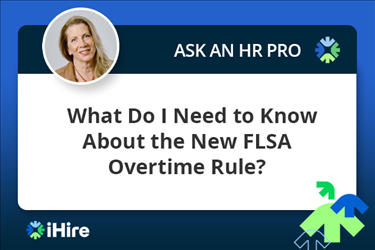- Employer Resources
- |
- Last Updated: May 19, 2021

5 Tips to Help You Build A Strategic Small Business Hiring Plan
Perhaps above any other facet of small business development (including industry networking, milestone plotting, and brand creation), recruitment is the key to long-term success and employee retention. However, small business hiring can also be risky if not managed properly, and it can often be pointed to as the primary reason why small businesses fail.
Your time and financial resources are limited, yet you need to bring in talent to produce growth: invest too little in people and your growth will stagnate, but invest too much and you’ll run into cash flow issues that stop you in your tracks.
What you need is a strategic small business hiring plan to identify what roles you need to fill, determine your top priorities, define how hiring will impact your bottom line, and help you achieve your specific goals. Here are some general tips for how you can do this effectively and efficiently:
1. Hold a Team Meeting
If you’re currently a solo entrepreneur, then this step needs to be more introspective. But for leaders of small teams, it’s essential that you gather everyone around (“everyone” including every person with a role or stake in your business) to carry out a broad appraisal of how things are going. You need to ask each person how they’re feeling about their job: is their workload excessive? Are there tasks they’re struggling with? Do they think a particular addition to the team would help?
You can’t always get this type of insight through talking to people in isolation. What’s more, you need everyone to be on the same page when it comes to your small business recruiting strategy. If you know that you intend to bring in three new people, but half your team doesn’t, it can cause conflict when it finally happens.

2. Order Roles by Priority
Learning how to hire employees for small business roles requires prioritization. Begin by ranking your needs according to importance, but also by how imminently they must be filled. For instance, having an in-house software developer is vital for many businesses, but it’s only worth investing in once your company has reached a certain size — before then, it’s an unnecessary expense.
Jot down all the roles you think you’ll need to fill, then list them logically, starting with the one you consider most critical. Make sure everyone knows the general hiring timeline: industry networking can get out of hand if people get prematurely excited about roles coming up. You don’t want to end up in the awkward situation of one of your employees telling their friend that you’re trying to bring someone in for a particular role if you’re not actually close to doing so.
Create Your Account Today
3. Calculate Your HR Budget
You need money to hire people, naturally, so there’s no sense in setting out roles to fill unless you know what you’ll be able to pay them. Look at all your operational costs, factoring in what you’re paying now and what you’ll be paying by the point at which you’re hoping to hire someone, then compare that information to your anticipated earnings.
This is also a great time to commit to making improvements to your business from an operational standpoint. If you’re not using any yet, move to a payroll management system (Wave’s is great, particularly if you use another tool in the Wave ecosystem), and consider trying something like GoodTime’s smart scheduling software in order to give candidates a world-class interview experience. Being a small business doesn’t mean thinking small! Skimping on recruitment and human resources is not the best strategy for how to grow a small business.

4. Assign Hiring Responsibility
Though you’ll want to be involved with hiring to a reasonable extent (giving final approval, perhaps), you shouldn’t be a major part of the process, because your time is better spent elsewhere. You have sales to fight for and networking events to attend. A common problem in the hiring process is that everyone knows what roles need to be filled but no one takes ownership, so no progress gets made.
Either in your initial team meeting, or in a subsequent meeting once you’ve been through the previous steps, delegate responsibility for sourcing and appraising candidates. Make sure people know what they’re required (and permitted) to do, so you can return to your daily tasks and stepin only when needed.
5. Set Clear Milestones
No matter the size of the business, ideas have a habit of appearing, getting a lot of approval, and then being forgotten entirely. Factor in the punishing workload of the typical small business owner — something that often keeps them distracted and stressed — and you have a recipe for numerous instances of wondering why something important hasn’t been done.
Once you’ve determined which roles you need to fill, you must set clear milestones to chart the progress of the hiring process. When do you need a group of candidates? When should interviews be completed by? When should you have a final shortlist? Consult your schedule, figure out the dates that make the most sense, and set as many reminders as possible. From there, it’s a matter of determination and execution.
The ongoing growth of your team will govern your future successes, and adopting a haphazard approach to recruitment is often why small businesses fail. Follow these steps to create a logical hiring plan, and enlist your entire team to follow it through — that’s how you’ll get the results you need.
Now that you know how to hire employees for small business roles, are you ready to execute your small business hiring strategy? iHire helps organizations of all sizes find the talent they need to succeed.




